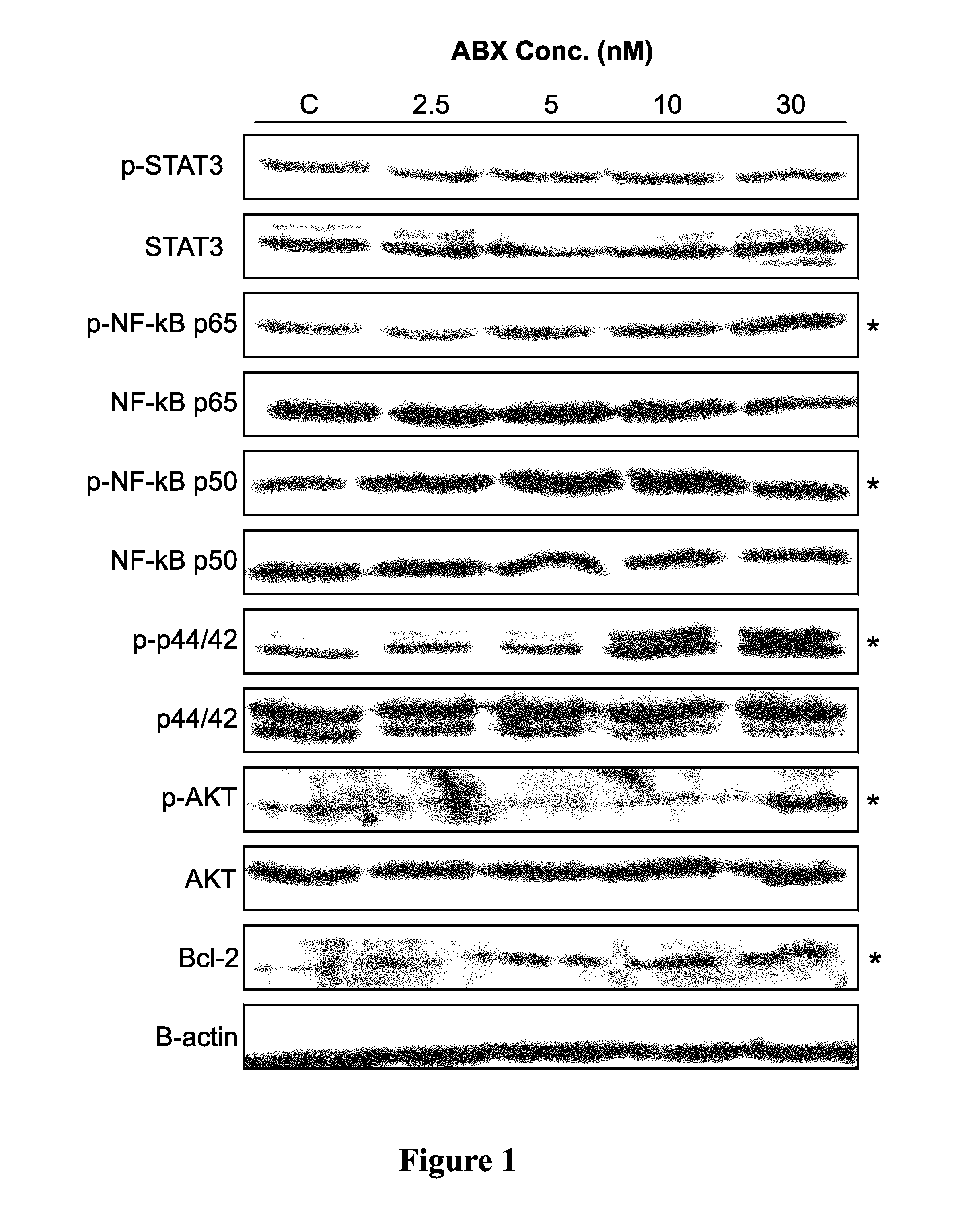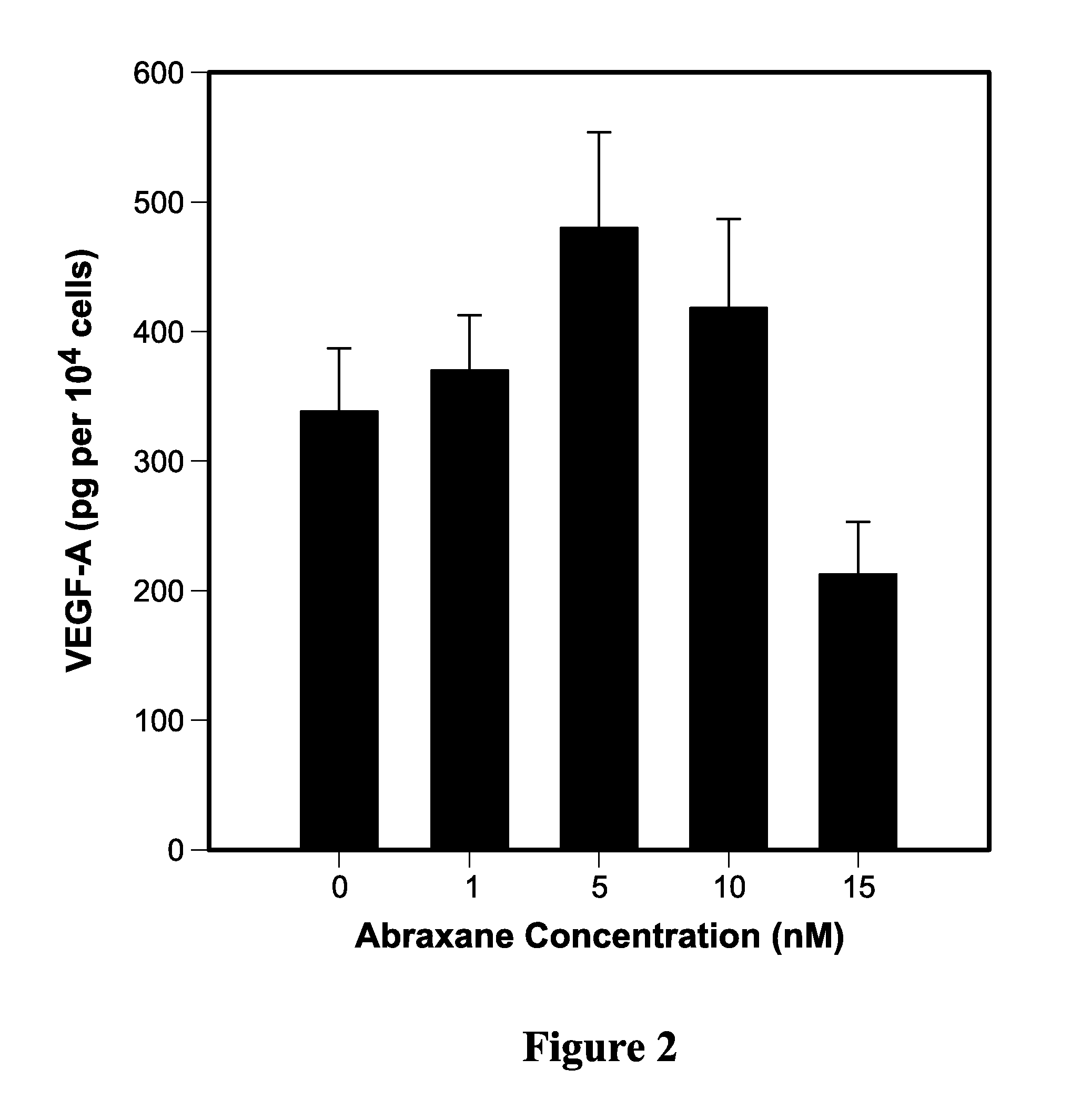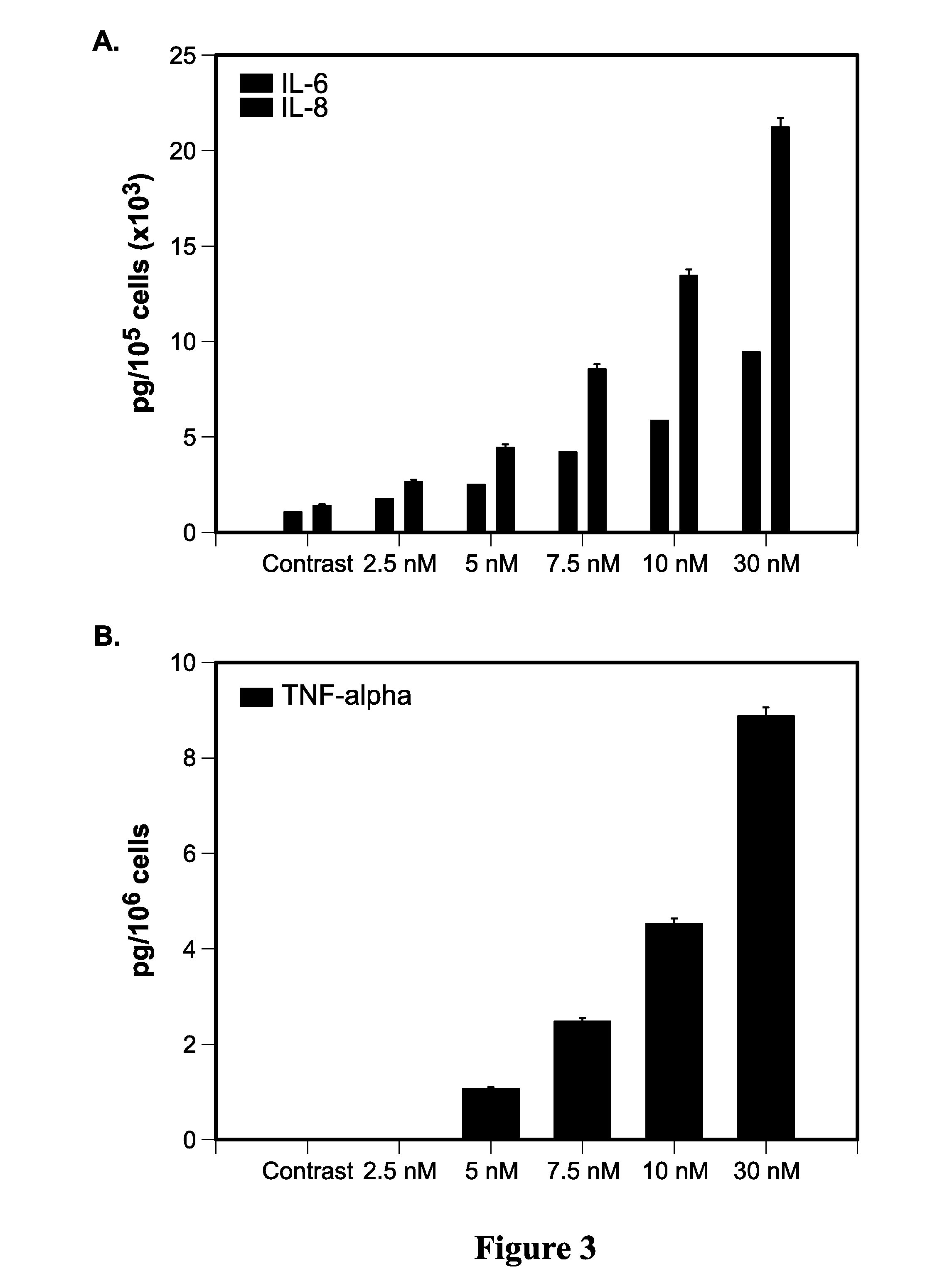Combinations and modes of administration of therapeutic agents and combination therapy
a combination therapy and therapeutic agent technology, applied in the field of combination therapy and therapeutic agent combination therapy, can solve the problems of inaccessibility to surgeons, inability to treat tumors located in other areas, and inability to achieve the effect of reducing the number of tumors that cannot respond to drug and/or radiation therapy, and suppressing the taxane-mediated upregulation of il-8
- Summary
- Abstract
- Description
- Claims
- Application Information
AI Technical Summary
Benefits of technology
Problems solved by technology
Method used
Image
Examples
example 1
Induction of Survival and Inflammatory Signals by Chemotherapy in MDA-MB-231 Tumor Cells
[0190]Cultured MDA-MB-231 breast tumor cells were treated with 0, 2.5, 5, 10, and 30 nM of Abraxane® for 48 hr. Cell lysates was detected for prosurvival signals (p-STAT3, p42 & p44 kinase, p-NF-κB p65, p-NF-κB p50, p-Akt, bcl-2) using Western blotting. Conditioned media was analyzed for secreted levels of angiogenic (VEGF-A) and inflammatory (IL-6, IL-8, and TNF-a) proteins by ELISA.
[0191]Cultured MDA-MB-231 cells were treated with 0, 2.5, 5, 10, and 30 nM of Abraxane® followed by detection of angiogenic (VEGF-A), prosurvival (p42 & p44 kinase, bcl-2) and inflammatory (IL-6, IL-8, and TNF-a) proteins using Western blotting and ELISA.
[0192]In vitro, Abraxane® treatment increased expression of VEGF-A, p42 / 44 kinase, bcl-2 as well as total and phosphorylated p65 subunit of NF-kB. Treated cells secreted 25- to 30-fold higher concentrations of inflammatory cytokines IL-6, IL-8, and TNF-a into conditi...
example 2
Induction of Survival Signals by Chemotherapy in MDA-MB-231 Breast Tumor Xenografts In Vivo
[0196]Luciferase-tagged MDA-MB-231 cells were implanted orthotopically into the mammary fatpad of female SCID mice and allowed to reach 500 mm3 in size before treated with 30 mg / kg Abraxane®, IV, qdx5.
[0197]Mice were sacrificed 3, 5 or 8 days post treatment and MDA-MB-231 tumors were extracted. Tumor lysates were analyzed for VEGF expression and pro-survival signals (p42 & p44 kinase, p-NF-κB p50, p-Akt, bcl-2) using Western blotting. Expression of bcl-2 was further analyzed by immunohistochemistry.
[0198]MDA-MB-231 tumors were extracted from mice upon cessation of intravenous (IV) Abraxane® therapy (10 to 30 mg / kg, qdx5) followed by Western blot and immunohistochemical analyses.
[0199]Significant increases in bcl-2 and inflammatory cytokines were observed in tumors extracted immediately after paclitaxel therapy in vivo as confirmed by both Western blotting and immunohistochemical analyses.
[0200...
example 3
Activation of the NF-κB Pathway by Nab-Paclitaxel in Cultured 231-Luc+ Cells
[0202]231-Luc+ cells were treated with escalating doses of nab-paclitaxel (0-30 nM) for 8-48 hours followed by Western blot analysis. Eight hours after exposure to nab-paclitaxel the expression of phosphorylated p-p50 and p-p65 subunits of the NF-κB as well as Bcl-xL was significantly increased (FIG. 6A). Later time-points (24 h and 48 h) showed significant increases in p-Akt and p-p44 / 42 although the expression of non-phosphorylated counterparts remained unchanged (FIG. 6A). NF-κB activation by nab-paclitaxel was further confirmed by measuring inflammatory cytokines IL-6 and IL-8, the downstream products of this pathway. Cytokines from conditioned medium of 231-Luc+ cells treated for 72 h with nab-paclitaxel (2.5-30 nM) were measured using Luminex. Nab-paclitaxel significantly increased expression of both IL-6 and IL-8 in a dose-dependent manner up to maximum of 20-22-fold (FIG. 6B). TNF-a was also increase...
PUM
| Property | Measurement | Unit |
|---|---|---|
| Diameter | aaaaa | aaaaa |
| Weight ratio | aaaaa | aaaaa |
Abstract
Description
Claims
Application Information
 Login to View More
Login to View More - R&D
- Intellectual Property
- Life Sciences
- Materials
- Tech Scout
- Unparalleled Data Quality
- Higher Quality Content
- 60% Fewer Hallucinations
Browse by: Latest US Patents, China's latest patents, Technical Efficacy Thesaurus, Application Domain, Technology Topic, Popular Technical Reports.
© 2025 PatSnap. All rights reserved.Legal|Privacy policy|Modern Slavery Act Transparency Statement|Sitemap|About US| Contact US: help@patsnap.com



